The historic county of Yorkshire is situated in the north of England, and is the largest county in the whole of the United Kingdom; with its rolling green hills, quaint and charming towns and villages, as well as a string of historic castles that are dotted across the landscape, and each hold their own fascinating story.
Here are the best castles in Yorkshire, of which many are open to the general public, and make for a magical day-trip:
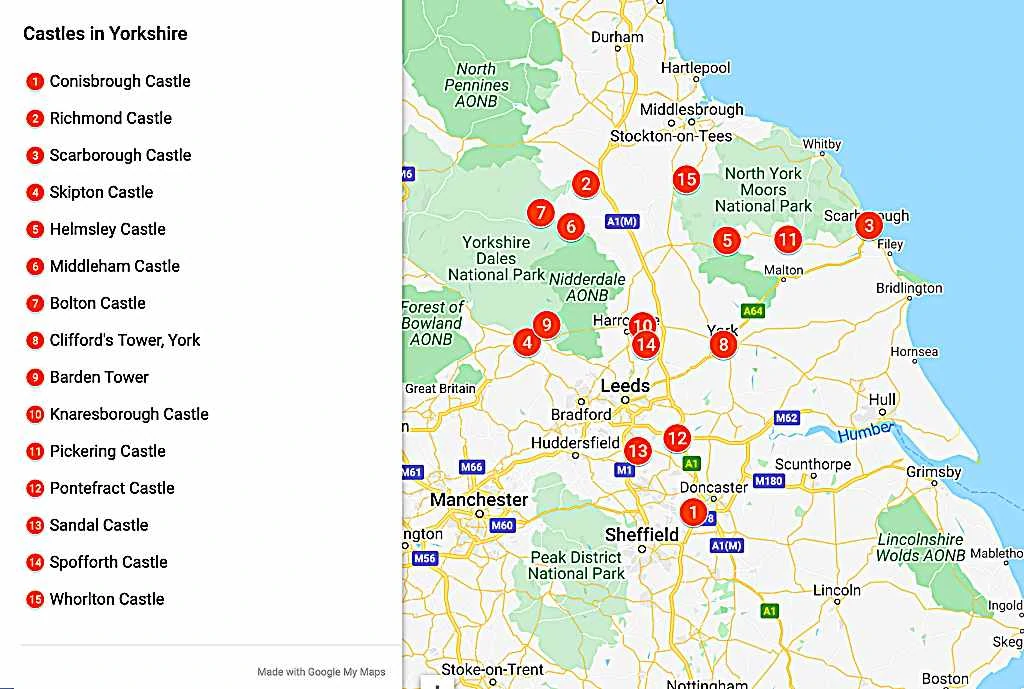
The Best 15 Castles To Visit In Yorkshire
1. Conisbrough Castle
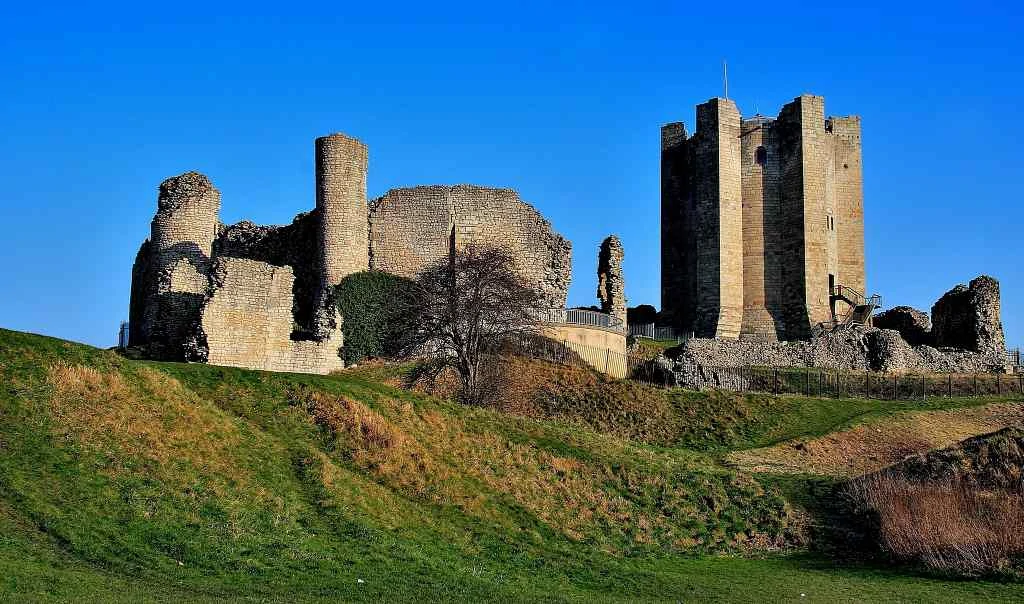
Situated in the South Yorkshire town of Conisbrough, lies the fantastic medieval fortification, Conisbrough Castle; with its origins dating back to the 11th century, when it was established by William de Warenne, who was the Earl of Surrey in the years following the Norman Conquest of England in the year 1066.
Throughout the Middle Ages, the castle was certainly in its prime, though it sadly fell into disrepair after its outer wall was heavily damaged by subsidence, during the 16th century.
Throughout the 19th century, the castle was idealised by several authors and artists, including Sir Walter Scott, who in 1819, used the castle as the set for ‘Ivanhoe’.
Where: Conisbrough
When: 11th century
Open for visit: Yes, check here for more information.
2. Richmond Castle

In the bustling North Yorkshire market town of Richmond lies the beautiful and historic Richmond Castle; after the Norman Conquest of England in the year 1066, a string of castles were constructed throughout the country; Richmond Castle was erected in the year 1071, by Alan Rufus who was a prominent nobleman.
The castle was later expanded in the 12th century, by the great-nephew, where a keep was also added. Sadly, the castle fell to ruin in the year 1540, as there were no inhabitants and its military role has dried up.
However, the castle is in great condition today, and many visitors are attracted to its gorgeous façade, and the centuries worth of history attached to it.
Where: Richmond
When: 11th century
Open for visit: Yes, check here for more information.
3. Scarborough Castle
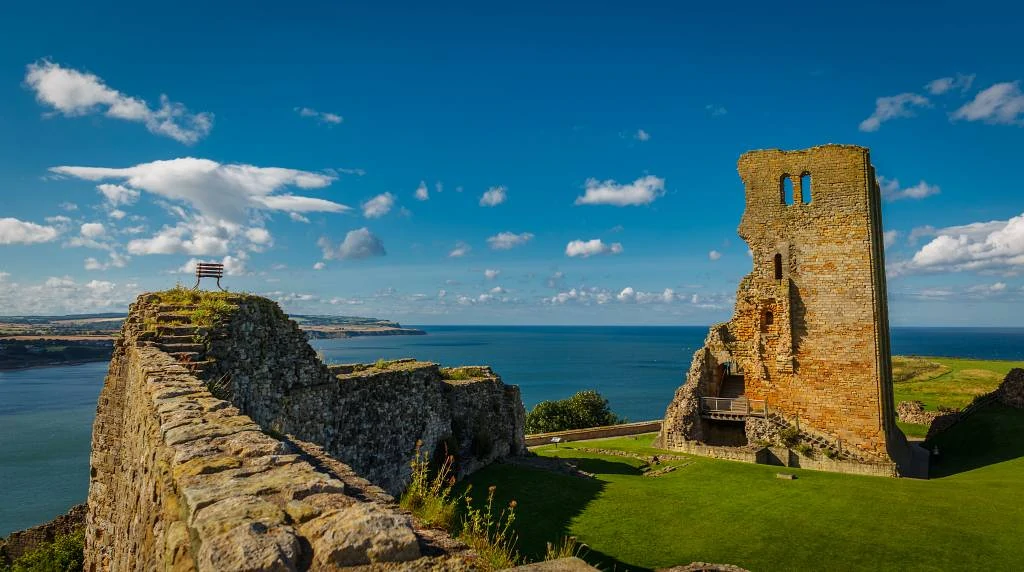
One of the most stunning castles in the North of Yorkshire, Scarborough Castle is a large medieval Royal fortress that is located on a rocky promontory, offering views of the vast and beautiful North Sea and the town of Scarborough.
The castle has so many layers of history, the earliest of which date back to the Iron Age, where an early settlement existed. The first wooden fortification dates back to the 1130s, though the first stone castle is known to have been built in the 1150s; the castle was constructed in the contemporary and stereotypical medieval architectural style, and many of these original features are visible to this day.
Where: Scarborough
When: 12th century
Open for visit: Yes, check here for more information.
4. Skipton Castle
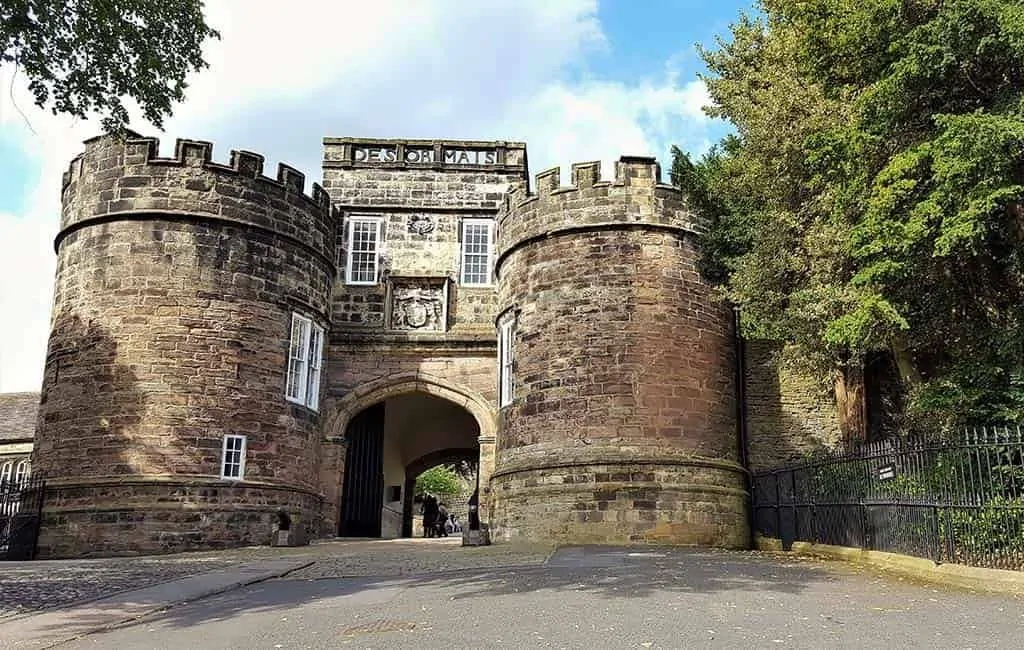
In the heart of Skipton in North Yorkshire, lies the gorgeous Skipton Castle, which is a large, Grade I listed medieval castle.
The origins of Skipton Castle date back to the year 1090, where an early motte and bailey castle was erected; it was constructed by Robert de Romille, who was the lord of the Multiple Estates of Bolton Abbey.
The castle’s early role was primarily that of a military fortress; it played a critical role during the English Civil War, where it was the only Royalist stronghold in the entirety of the North of England.
Today, the castle is a key tourist attraction for the area, as visitors are attracted to the well-preserved state of the fortress.
Where: Skipton
When: 1090
Open for visit: Yes, check here for more information.
5. Helmsley Castle

Also often referred to as ‘Hamlake’, Helmsley Castle is a fantastic medieval fortress, that is situated in the thriving North Yorkshire market town of Helmsley.
The castle is believed to have first been constructed in approximately the year 1120, where it was built in wood by Walter l’Espec, who held a powerful political and military position at the time.
Throughout the Middle Ages, the fortress was in its prime, serving a critical role in several key battles; it was also the residence for many nobles and prominent figures, and it changed shape on several different occasions. Today, the castle is open to the general public, and it is maintained by English Heritage.
Where: Helmsley
When: 1120
Open for visit: Yes, for more information, check here.
6. Middleham Castle

Situated in the small market town of Middleham in North Yorkshire, lies the fantastic ruined Middleham Castle; the origins of the castle date back to the year 1190, where it was constructed by the 3rd Lord of Middleham and Spennithorne, Robert Fitzrandolph.
The castle has a wonderful and layered history, for instance, it was the childhood home of King Richard III, and was garrisoned during the Civil War of the 17th century.
The architecture of the castle is also fantastic; it is large but nonetheless compact, and many of the original features are still intact, such as the Norman keep and the walls. Today, the castle is open to the public and is a very popular tourist attraction for the area.
Where: Middleham
When: 1190
Open for visit: Yes. Check here for more information.
7. Bolton Castle
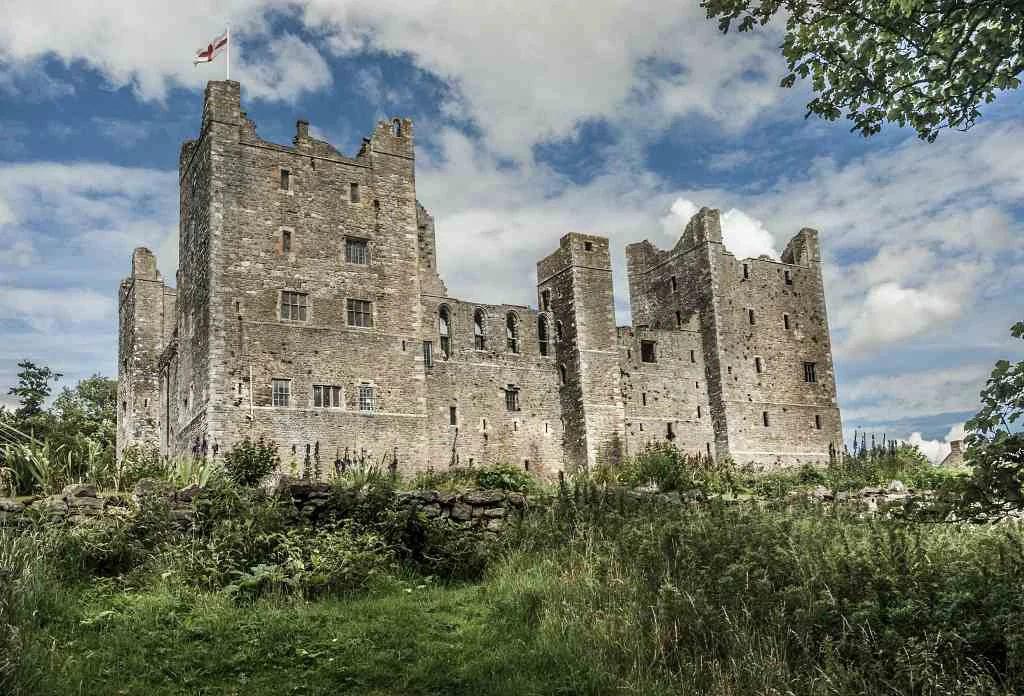
In the heart of Wensleydale in Yorkshire, lies the gorgeous 14th century Bolton Castle. The castle was originally erected between the years 1378 and 1399, by Richard, 1st Baron Scrope of Bolton.
One of the main reasons in which Bolton Castle is so famous and well-known to this day is that Mary, Queen of Scots was held here as a prisoner for six months; many tourists head to the castle to learn more about her time here, as it is so fascinating.
The castle has also been the setting for many famous television productions and films, such as ‘Elizabeth’ and ‘Ivanhoe’. There is lots to do at the castle and its surrounding grounds, such as a maze, a rose garden, a vineyard, and a herb garden.
Where: Wensleydale
When: 14th century
Open for visit: Yes, check here for more information.
8. Clifford’s Tower
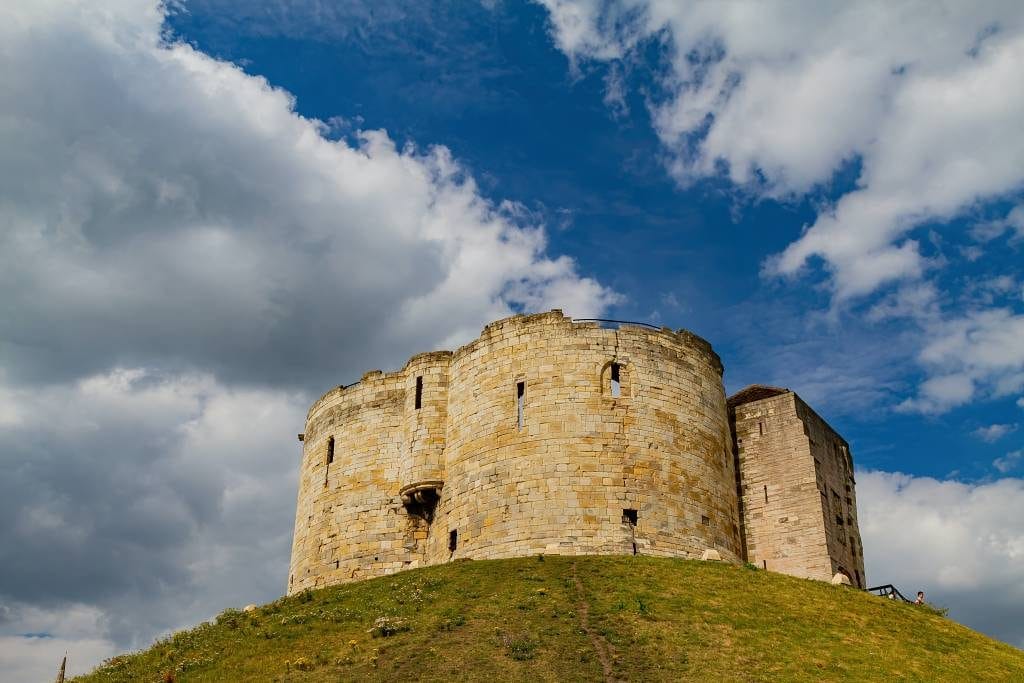
In the heart of the vibrant, bustling Yorkshire city of York, right in its historic centre, lies the wonderful Clifford’s Tower; originally part of the historic York Castle that was constructed by William the Conqueror in the 11th century, Clifford’s Tower is all that remains of the fortress.
Over the years, the castle has served as a variety of different things, such as a prison, a royal mint, and today, as a viewing point for tourists to the area. This is a great place to start if you are visiting York, as it allows you to see all across the city, and even further afield.
Where: York
When: 11th century
Open for visit: Yes, check here for more information.
9. Barden Tower

Barden Tower, situated in the Parish of Barden in Wharfedale in North Yorkshire, is a brilliant ruined building that dates back to the late Middle Ages.
Between the 15th and 16th centuries, Bardon Tower was used primarily as a hunting lodge for noble and wealthy individuals in the local society; in the 1650s, a large-scale renovation took place, that restored the castle back to its former glory.
However, despite this reparation, the Bardon Tower fell into disrepair in the 18th century and has since been ruined. Nonetheless, the castle is accessible to tourists, who can stroll up to it, take in its façade, and even enjoy a picnic on its grounds.
Where: Barden
When: 15th century
Style: Medieval
Open for visit: Always accessible to the general public.
10. Knaresborough Castle

Situated in the North Yorkshire town of Knaresborough, lies the fantastic Knaresborough Castle, which is an impressive ruined fortress that dates back to the Middle Ages.
It was first built in around the year 1100, by a Norman baron, whose identity is not entirely certain; it is situated upon a cliff that towers above the River Nidd, making it an ideal location for defence and protecting key trading routes.
In the midst of the English Civil War of the 17th century, the castle was sieged by Parliamentarian troops in around the year 1644, and it fell to ruin by the year 1648. Today, the castle is in a ruined state, though the grounds and the remains are accessible to the general public.
Where: Knaresborough
When: 1100
Open for visit: Yes, check here for more information.
11. Pickering Castle
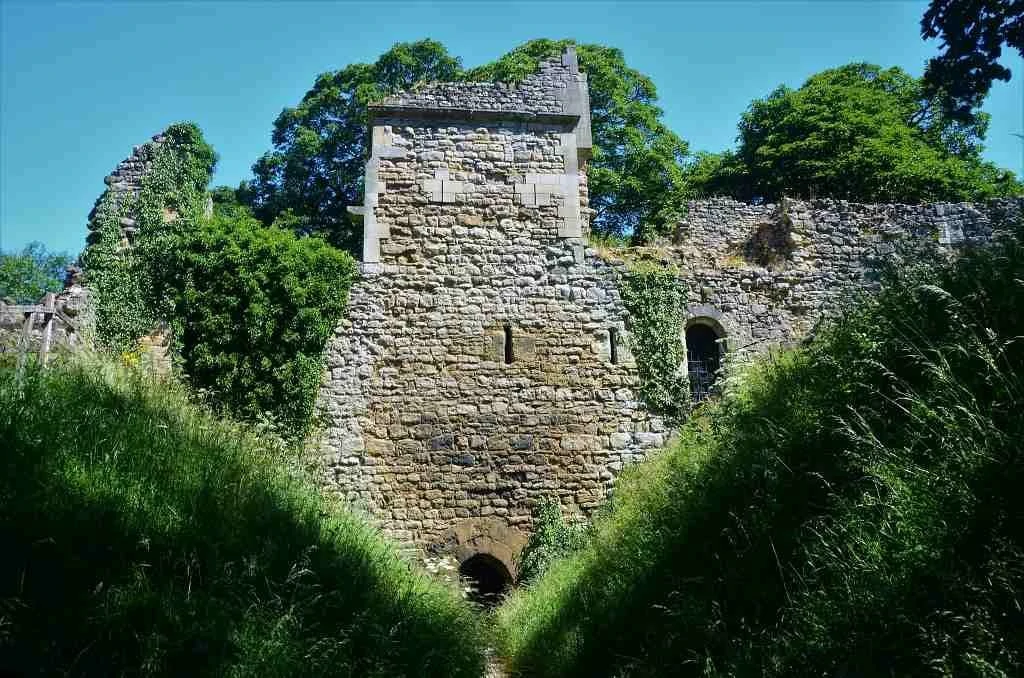
Situated in the ancient North Yorkshire market town of Pickering, lies the wonderful and impressive Pickering Castle, which is a medieval motte and bailey fortification.
The original current inner ward, which was initially the bailey, was constructed between the years 1180 and 1187, though this was later developed from timber and earth into a defensive stone shell keep between the years 1216 and 1236.
The remains that stand today are incredibly well-preserved, and it is well-known as being one of very few castles in England that were not heavily damaged by the English Civil War and the War of the Roses.
Where: Pickering
When: 12th century
Open for visit: Yes, check here for more information.
12. Pontefract Castle
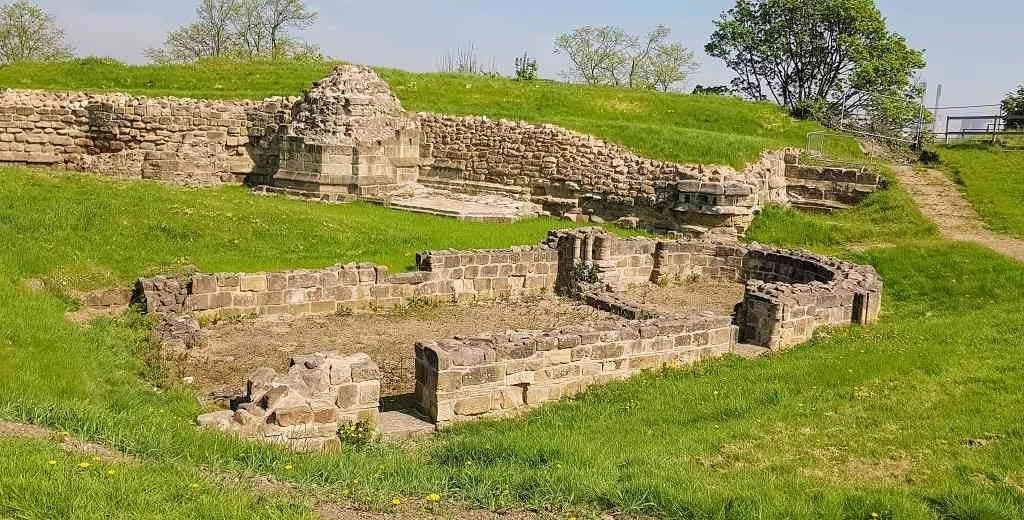
In the West Yorkshire town of Pontefract lies the magnificent Pontefract Castle, which is also occasionally known as Pomfret Castle.
It was originally constructed in approximately the year 1070 by Ilbert de Lacy, who was a Norman nobleman, who played a critical role in the Norman Conquest of England, so much so that William to Conqueror granted him the land in which to built Pontefract Castle.
As well as the castle is famous for its role in numerous historical events, it is mainly well-known for being the place in which King Richard II is said to have died. It is today open to the general public and makes for a wonderful day out.
Where: Pontefract
When: 1070
Open for visit: Yes, check here for more information.
13. Sandal Castle
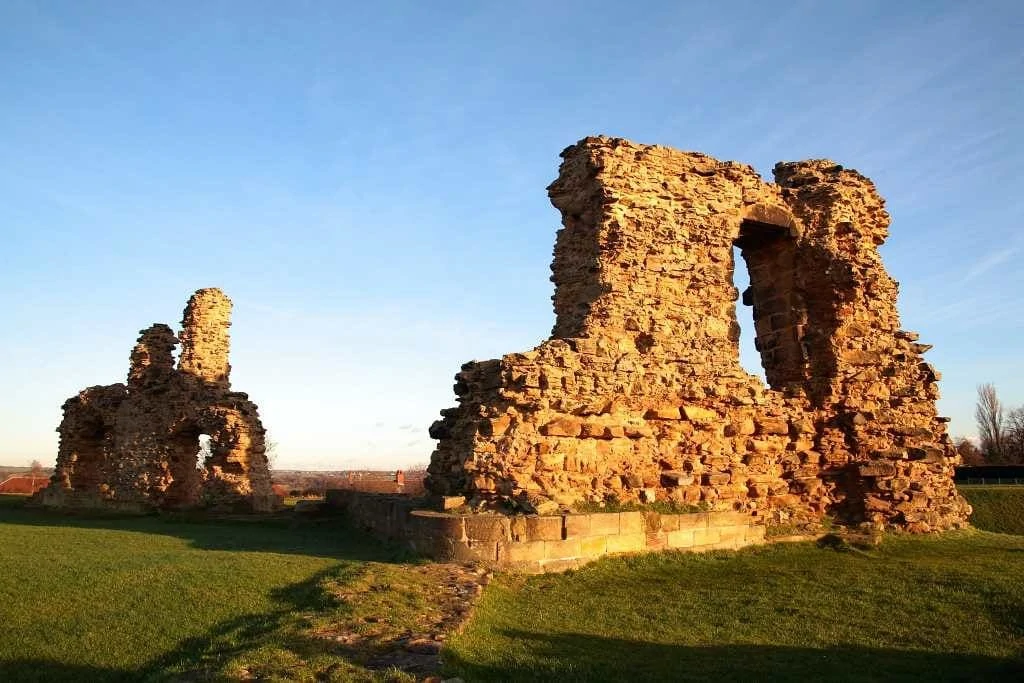
Sandal Castle, the fantastic ruined medieval castle that is situated on the outskirts of the large West Yorkshire city of Wakefield, in a small suburb called Sandal Magna.
Its origins date back to the 12th century, whereby the earliest castle made of timber was first erected; over the following centuries, the castle was renovated several times, and more defensive additions were added to it.
The castle also played a role in several historical events, such as The Battle of Wakefield, and the English Civil War. The castle and its grounds are open to the general public, and it makes for a great day trip from Wakefield.
Where: Sandal Magna
When: 12th century
Open for visit: Yes, check here for more information.
14. Spofforth Castle
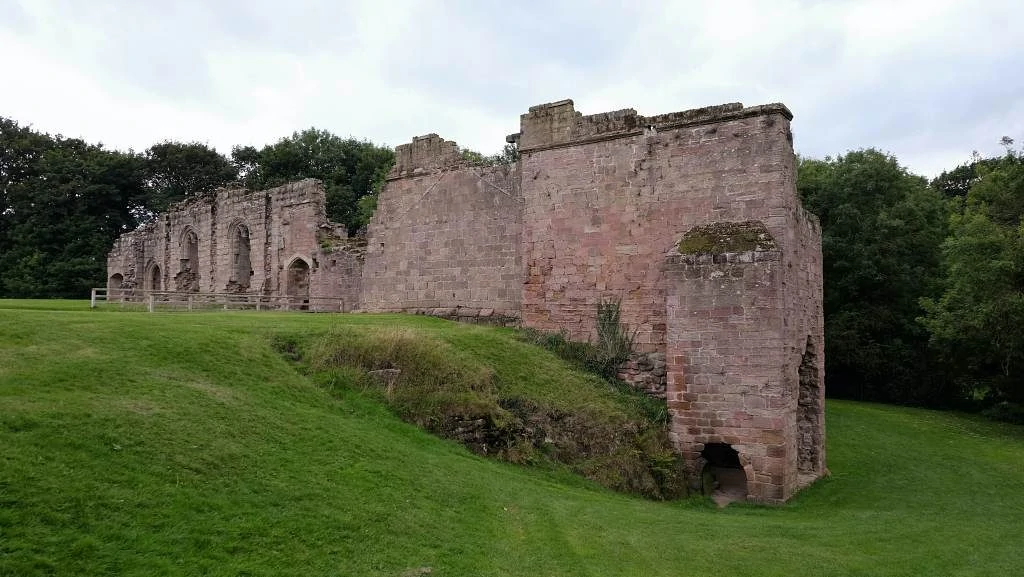
Located in the sleep North Yorkshire village of Spofforth, lies the historic fortified manor house, Spofforth Castle. The origins of this castle date back to the turn of the 14th century, whereby it was constructed by Henry de Percy after he was given the authority to construct a grand and impressive manor house on the site.
Over the following centuries, particularly in the 15th century, the castle was modified and altered drastically. In the midst of the English Civil War of the mid-17th century, the castle sadly eventually fell to ruin and has never since been repaired. Today, the castle is a Grade II listed building and is managed by the English Heritage as a tourist attraction.
Where: Spofforth
When: 14th century
Open for visit: Yes, check here for more information.
15. Whorlton Castle

Nearby to the abandoned village of Whorlton in North Yorkshire, lies the beautiful ruined medieval castle, Whorlton Castle.
The castle’s origins date back to the turn of the 12th century, whereby it was constructed as an early motte and bailey castle, built in the Norman architectural style; the initial purpose of this castle was to oversee a critical road on the North York Moors.
However, Whorlton Castle sadly fell into ruin in the 14th century, though it continued to be inhabited until the early 17th century. Today, the castle is a listed building, though it is not possible to explore the inside.
Where: Whorlton
When: 12th century
Open for visit: it is always accessible, however not possible to enter it.
